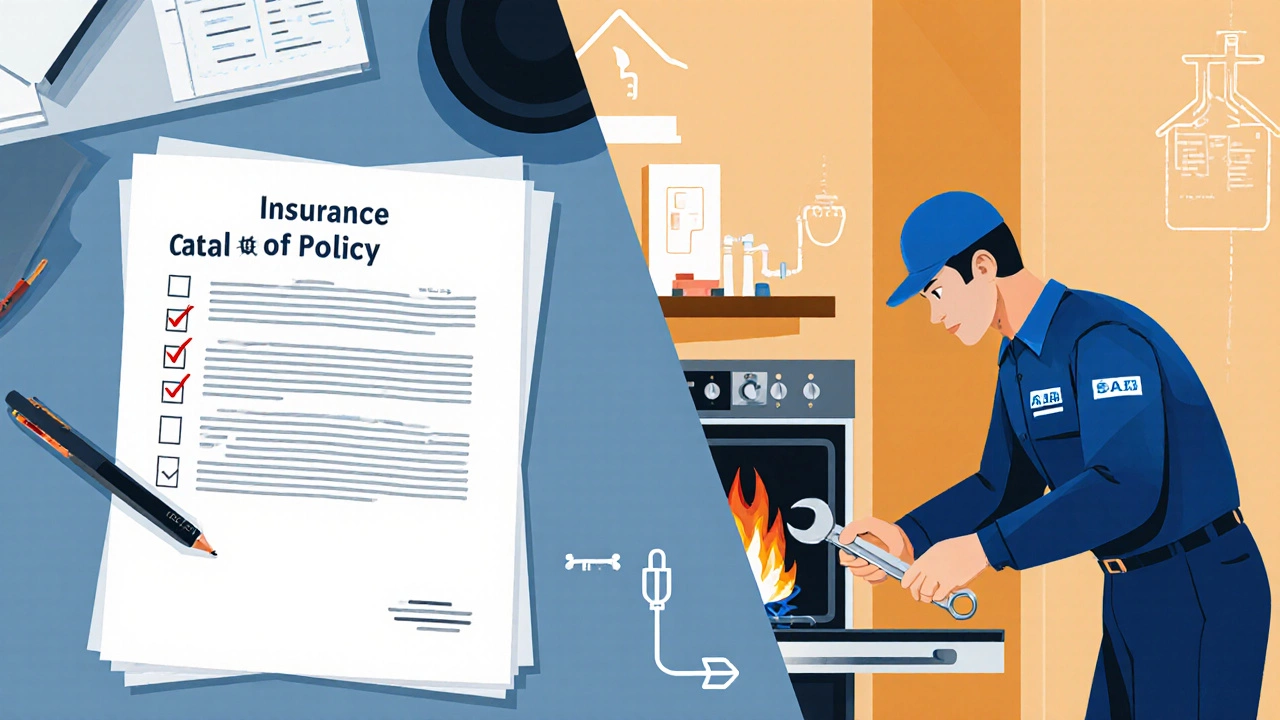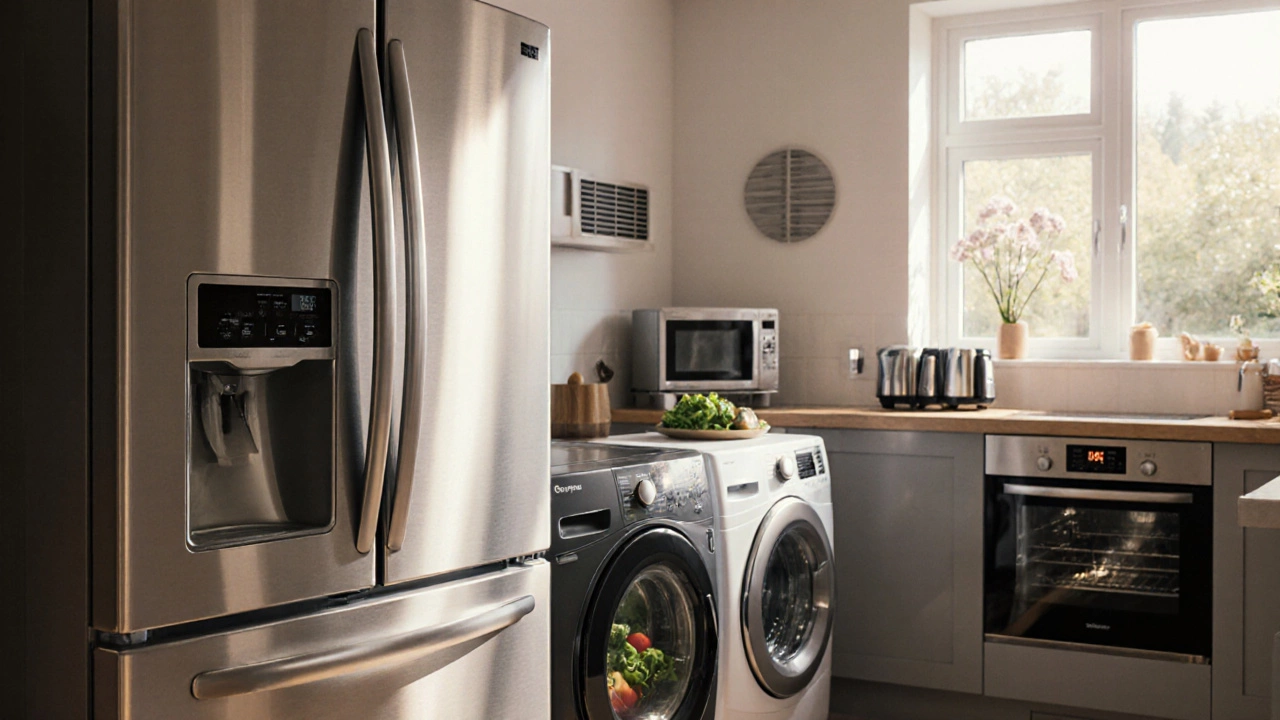Appliance Qualification Checker
This tool helps you determine if a device qualifies as a household appliance based on common industry standards and insurance definitions.
Result
This appears to be an:
Insurance Note
Quick Takeaways
- An appliance is any device designed to perform a specific household function, typically powered by electricity or gas.
- Legal and insurance policies often use criteria like mobility, purpose, and installation method to decide coverage.
- Major categories include major appliances (e.g., Refrigerator), small appliances (e.g., Microwave), and built‑in systems (e.g., HVAC).
- Knowing the definition helps you decide if a repair call falls under appliance service or a warranty claim.
- Regular maintenance and proper installation can extend lifespan and keep service costs low.
What Qualifies as an Appliance?
When you hear the word appliance definition, picture anything you plug in or hook up to run your home. In plain terms, an appliance is a device built to carry out a specific household task-keeping food cold, washing clothes, drying dishes, or heating space. The key traits are:
- Purpose‑built: It serves a dedicated function, not a multipurpose tool.
- Fixed or semi‑portable: Most are installed in a specific location (like a kitchen or laundry room), but some can be moved without major re‑installation.
- Powered: Either electricity, natural gas, propane, or a combination.
- Designed for domestic use: Commercial‑grade equipment is usually excluded.
Anything that meets these criteria generally falls under the umbrella of household appliances.
Legal and Insurance Perspectives
Insurance companies and building codes have their own definitions. Most policies consider an appliance covered if it is:
- Permanent or semi‑permanent in a residential setting.
- Used for a domestic purpose (e.g., cooking, cleaning, climate control).
- Installed by a qualified technician or meets manufacturer installation standards.
For example, a landlord’s property insurance will list Washing Machine and Dryer as covered appliances, but a portable electric heater that you can move room‑to‑room might be classified as a “personal item” and fall under a different rider.

Major Household Categories
Understanding the main groups helps you quickly decide if something is an appliance.
- Refrigerator - Stores perishable food at low temperatures.
- Washing Machine - Cleans clothing with water and detergent.
- Dishwasher - Automates dishwashing.
- Oven - Provides dry, enclosed heat for baking or roasting.
- Dryer - Removes moisture from laundry.
- Microwave - Uses microwaves to heat food quickly.
- HVAC - Handles heating, ventilation, and air‑conditioning for the entire home.
- Small kitchen gadgets (toaster, coffee maker) - Often classified as “small appliances” but still covered under most service contracts.
Each of these meets the definition, but their service needs differ dramatically.
How to Determine if a Repair Falls Under Appliance Service
When you call a technician, they’ll ask a few quick questions:
- Is the unit installed in a permanent location?
- Does it require a connection to gas or a dedicated electrical circuit?
- Is it listed in your home warranty or insurance policy as a covered item?
If you answer “yes” to all three, the job is typically treated as an appliance service call. If the device is a portable vacuum or a handheld blender, it’s generally considered a personal item and may not be covered under the same agreement.
Energy Source and Installation Considerations
Power type is a practical filter. Appliances that need a dedicated 240‑V outlet (like an Oven or Dryer) are always treated as major appliances because they involve wiring that must follow electrical codes. Gas‑fed units-such as a gas stove or a gas‑powered HVAC furnace-require certified installation and regular safety inspections.
Electric‑only devices that plug into a standard 120‑V outlet can be a gray area. If a manufacturer lists the product under “appliance” in its user manual, it usually qualifies. Otherwise, it may be categorized as a “consumer electronics” item.
Maintenance Tips to Keep Your Appliances Running
Regular upkeep can prevent costly service calls. Here are simple habits that work for most devices:
- Clean filters and coils: For Refrigerator and HVAC, dust buildup reduces efficiency.
- Check door seals: A tight seal on ovens, fridges, and dishwashers stops energy waste.
- Balance loads: Overloading a Washing Machine or dryer can damage the drum and motor.
- Inspect power cords: Frayed cords on any electric appliance pose fire hazards.
- Schedule professional tune‑ups: Annual reviews for gas‑fired appliances catch leaks before they become emergencies.
Following these steps can extend lifespan by 20‑30 % and lower the frequency of service calls.
Quick Comparison of Common Appliance Types
| Appliance | Typical Use | Energy Source | Common Service Issue |
|---|---|---|---|
| Refrigerator | Food preservation | Electric (120‑V) | Compressor failure, temperature inconsistency |
| Washing Machine | Laundry cleaning | Electric (240‑V) | Drum leaks, motor burnout |
| Dishwasher | Dish cleaning | Electric (120‑V) | Spray arm blockage, pump failure |
| Oven | Baking / roasting | Electric or Gas | Heating element wear, ignition issues |
| Dryer | Laundry drying | Electric (240‑V) or Gas | Lint buildup, thermostat failure |
| Microwave | Quick heating | Electric (120‑V) | Magnetron failure, door latch issues |
| HVAC | Home heating & cooling | Electric & Gas | Compressor loss, refrigerant leaks |
Frequently Asked Questions
Is a portable air conditioner considered an appliance?
If the unit is plugged into a fixed outlet and used to cool a specific room, most insurers treat it as a small appliance. However, because it can be moved easily, some policies list it under personal items unless you’ve added a rider.
Do built‑in kitchen appliances count the same as freestanding ones?
Built‑in units, such as a wall‑mounted oven or a slide‑out dishwasher, are always classified as major appliances because they require professional installation and are considered part of the home’s fixtures.
Can a smart speaker be called an appliance?
A smart speaker mainly provides audio and voice‑controlled functions, not a core household task like cooking or cleaning, so it falls under consumer electronics, not appliances.
What’s the difference between an appliance and a piece of furniture?
Appliances are powered devices that perform a functional service (e.g., refrigeration). Furniture is non‑powered and serves storage or comfort purposes.
Are outdoor grills considered appliances?
Indoor or built‑in gas grills are treated as appliances because they connect to a gas line and require ventilation. Free‑standing charcoal grills are not, as they rely on combustible material rather than a utility connection.
